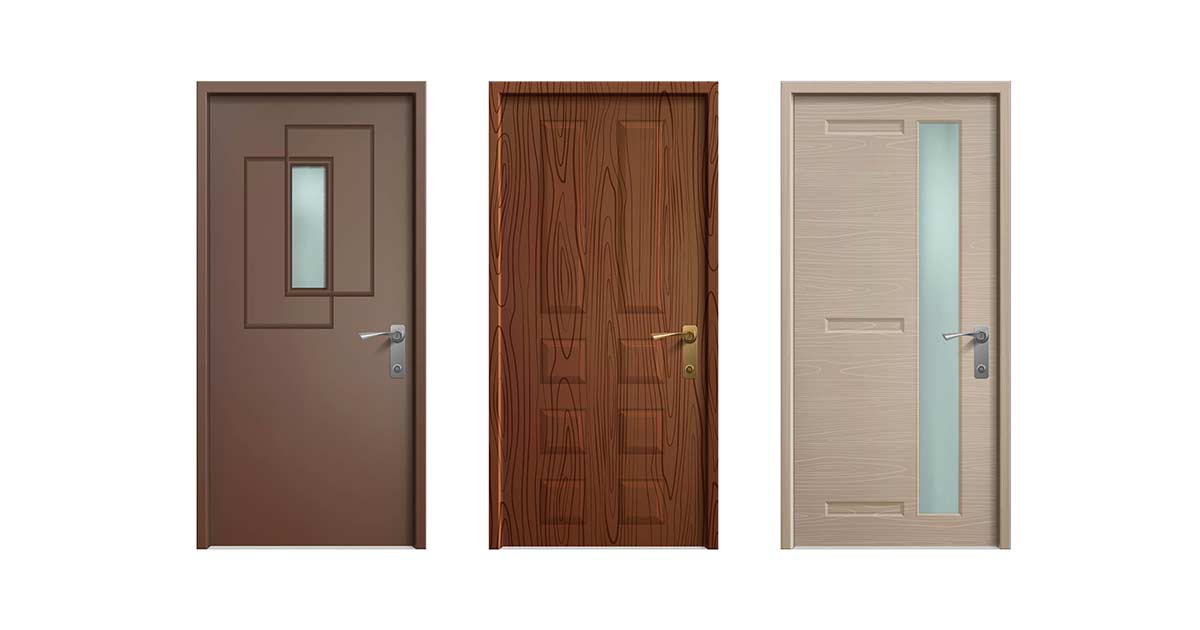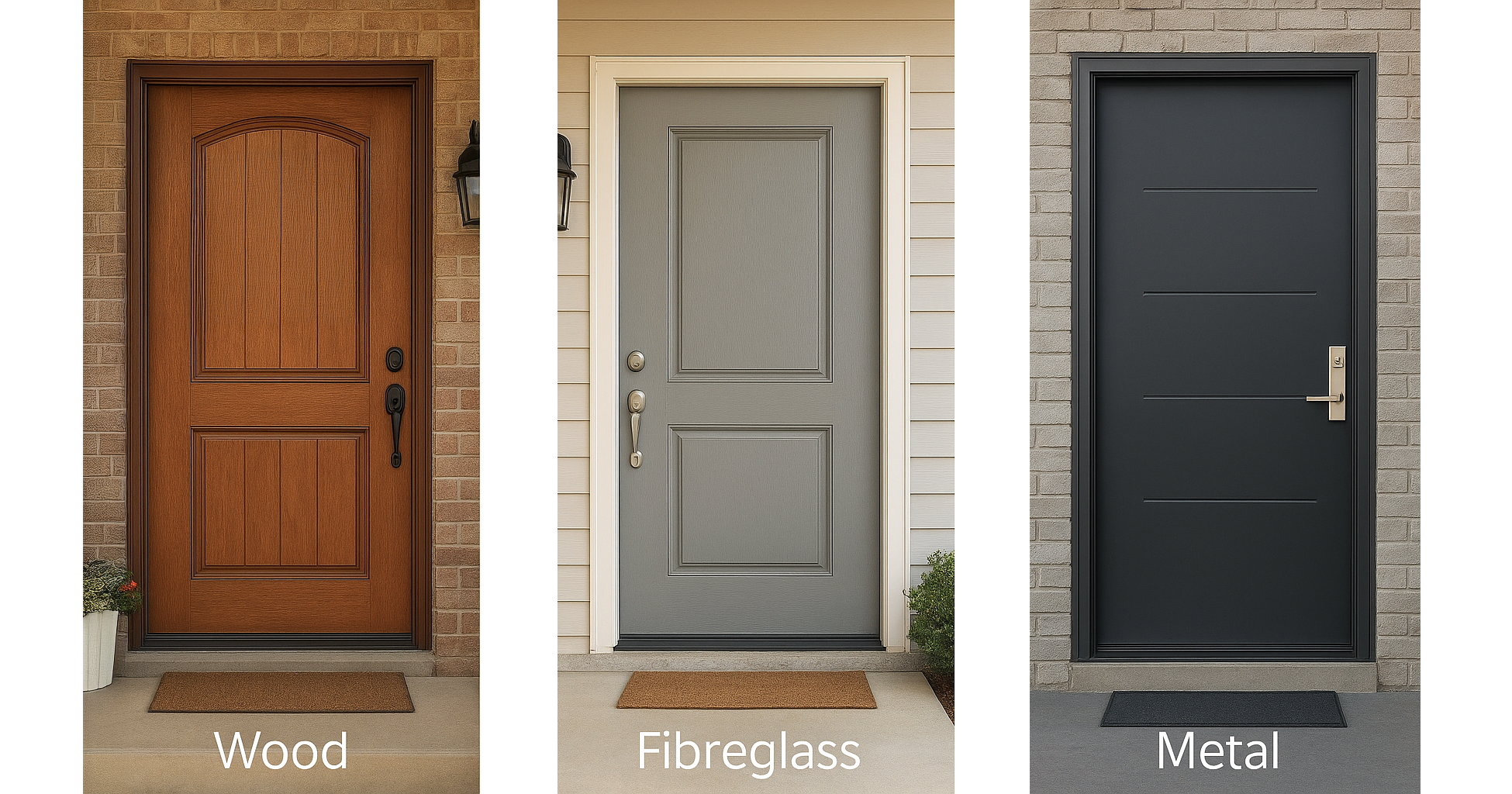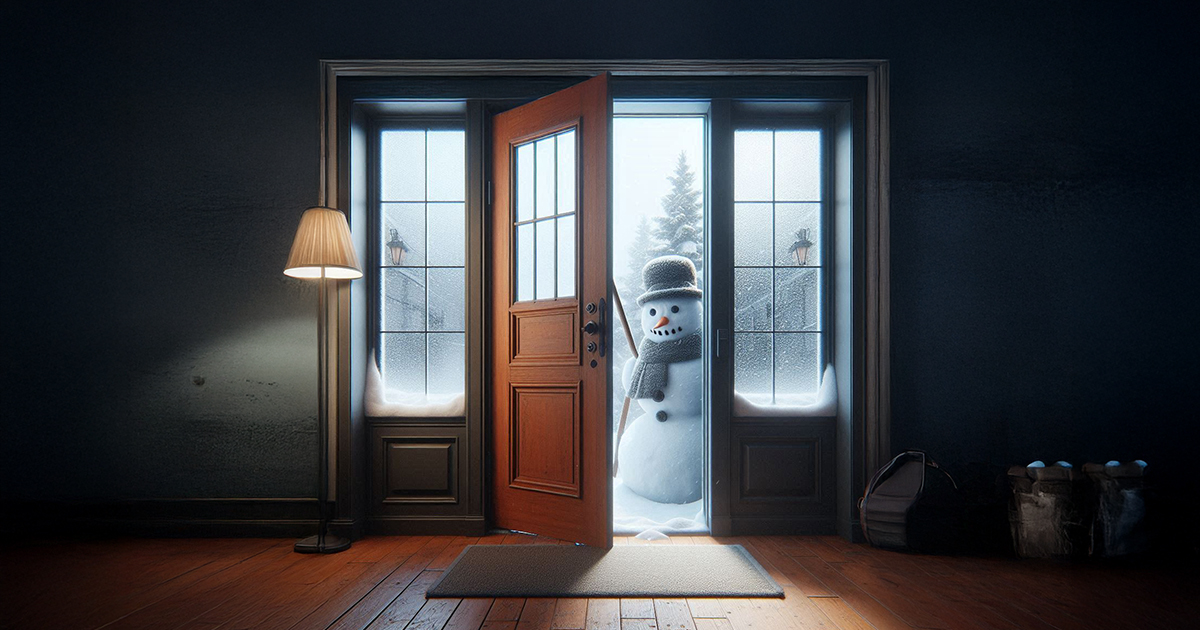Insights > Article > Posted: 2025-Mar-20, Updated: 2025-Oct-07
Door Weatherstripping: A Key to Long-Term Energy Savings
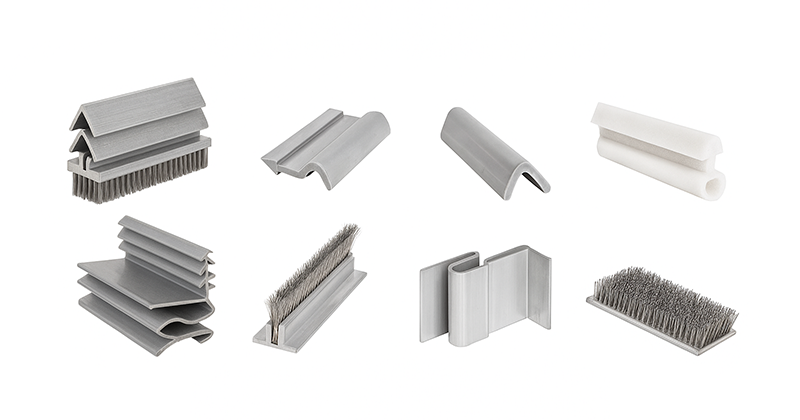
In this article:
- What Is Door Weatherstripping?
- Pre-installed vs Retrofit Door Weatherstripping Solutions
- Where Weatherstripping Is Used on New Doors
- Door Threshold Weatherstripping Types
- Door Jamb Weatherstripping Types
- Choosing the Right Weatherstripping
- Maintenance & Longevity
- How Weatherstripping Improves Energy Efficiency
- Key Takeaways
- Related Articles
- Installation - Entrance doors
- Request a free quote
This article explores the types of weatherstripping commonly used on new doors, how they work, and how to choose the right one.
What is door weatherstripping?
Door weatherstripping seals gaps between the door and frame to prevent air, moisture, and noise infiltration. For new doors, manufacturers often integrate multiple types and configurations to optimise performance.
Pre-installed vs retrofit door weatherstripping solutions
Weatherstripping is integrated into the manufacturing process of new doors to provide effective sealing and insulation from the very beginning of the product’s life cycle. Retrofit weatherstripping solutions can also be installed as supplemental or replacement measures to improve weather resistance and reduce air leakage in older structures. For the best performance, consult the manufacturer to ensure compatible components and a proper fit.
Please note: Bayview Windows does not offer retrofit weatherstripping services
Where Weatherstripping Is Used on New Doors
There are two main areas where weatherstripping is applied:
Door Threshold
Located at the bottom of the door, the threshold plays an important role in sealing the space between the door and the floor. It helps prevent drafts, moisture, insects, and dust from entering the home while improving energy efficiency and comfort.
Different styles of door sweeps and threshold seals are available to suit various door types, installation needs, and performance requirements, including:
- Bottom sweeps
- U-shaped door sweeps
- Automatic door sweeps
- Slide-on door sweeps
- Brush sweeps
- Triple-fin door sweeps
- Adjustable door sweeps
- Interlocking door sweeps
- Door shoe sweeps
- Soundproof door sweeps
- Rain drip door sweeps
Door Jambs
Installed along the sides and top of the door frame, door jamb weatherstripping creates a tight seal when the door is closed. It helps block drafts, moisture, dust, and noise from entering through the gaps around the door while improving overall energy efficiency and comfort.
Different types of weatherstripping are designed to fit various door materials, jamb profiles, and performance needs, including:
- Compression seal weatherstripping
- V-strip weatherstripping
- Bulb seal weatherstripping
- Magnetic weatherstripping
- Interlocking metal weatherstripping
- Brush-type weatherstripping
- Pile weatherstripping
Door Threshold Weatherstripping Types
1. Bottom sweeps
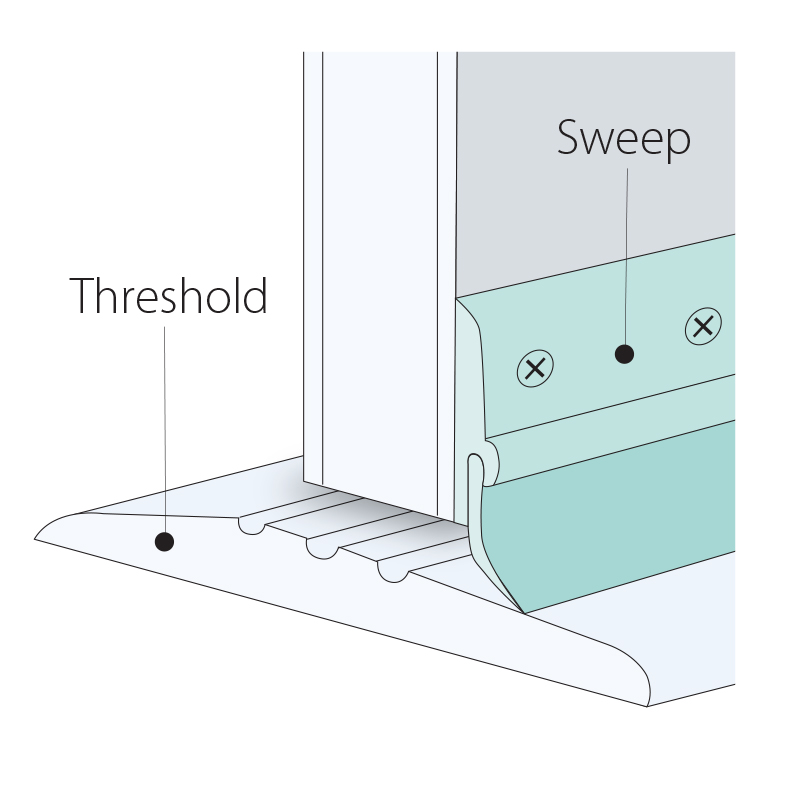
Exterior door bottom sweeps are installed along the bottom edge of exterior doors to seal out drafts, moisture, dust, insects, and noise. Usually made from rubber, vinyl, or bristle brush materials, they help improve comfort and efficiency. Here are some pros and cons to consider:
Pros:
- Helps lower heating and cooling costs
- Keeps indoor temperature comfortable
- Reduces outside noise
- Keeps insects and pests out
- Keeps dust and debris out
Cons:
- Needs basic tools and DIY skills
- May need occasional replacement or maintenance
- Not all sweeps fit every door or floor type
- Some may be visible and affect door appearance
2. U-shaped door sweeps
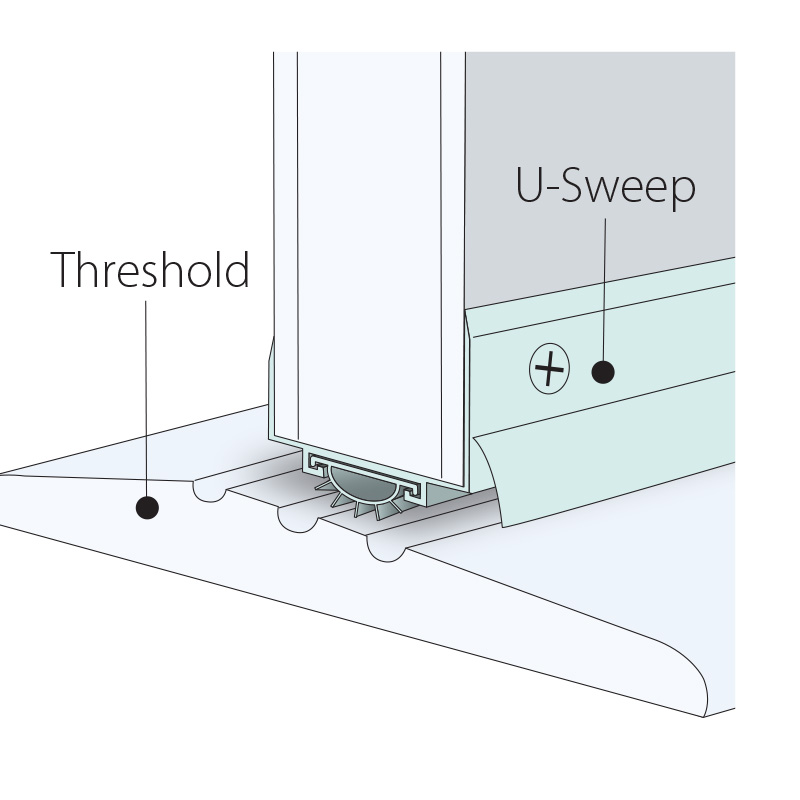
A U-shaped sweep is a type of weatherstripping that is attached to the bottom of the door. It is typically made of flexible materials such as rubber or vinyl. The U-shaped sweep is designed to be screwed or nailed onto the bottom edge of the door, forming a seal against the threshold. When the door is closed, the U-shaped sweep compresses against the threshold, creating a barrier against drafts, insects, and moisture. U-shaped sweeps can include and combine several other styles of sweeps, including brush, rain drips, shoe, and bottom sweeps, and are typically made of vinyl or rubber.
Pros:
- Seals tightly to block drafts, noise, dust, and insects
- Improves energy efficiency and lowers heating and cooling costs
- Easy to install with basic tools
- Durable for regular use and weather exposure
Cons:
- U-shaped sweeps may not fit all doors or floor types
- Design can affect clearance over thick carpets or uneven floors
- A visible U-shaped profile may not suit all tastes
- May wear out over time and need replacement
3. Automatic door sweeps
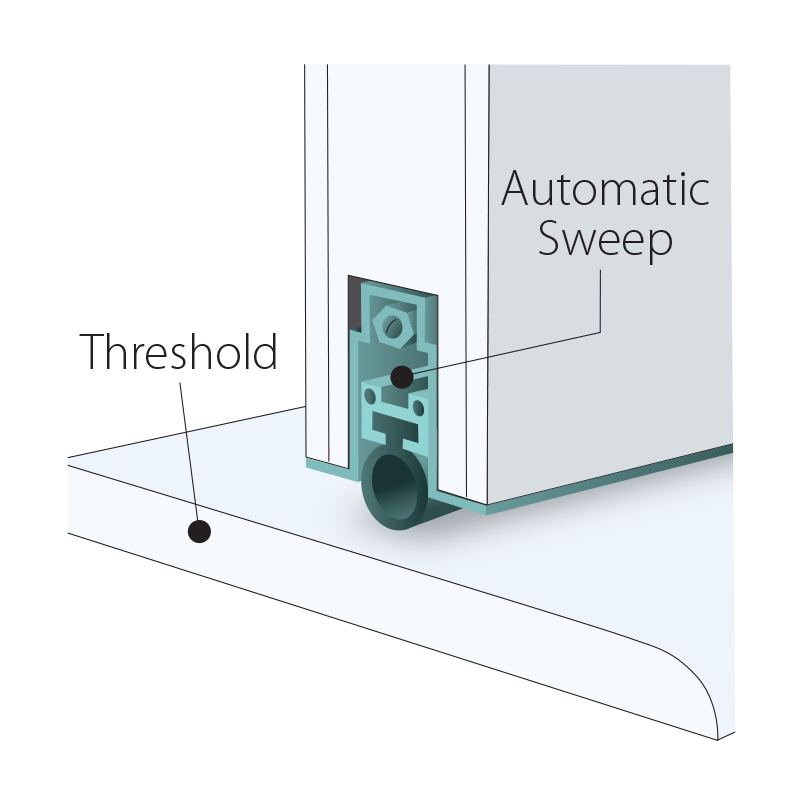
Automatic door sweeps, also known as automatic door bottoms, are a type of door sweep that operates automatically when the door is closed. They have a mechanism that lowers a seal or brush to the floor as the door closes, creating a tight seal.
Pros:
- Seals tightly to block drafts, noise, dust, and insects
- Boosts energy efficiency and lowers heating and cooling costs
- Works automatically when the door is closed
- Adjustable for uneven floors or carpets
- Discreet design that maintains the door’s appearance
Cons:
- Costs more than manual sweeps
- Needs more precise installation than manual sweeps
- May need occasional maintenance or adjustments
- Some may require a battery or electrical power
4. Slide-on door sweeps
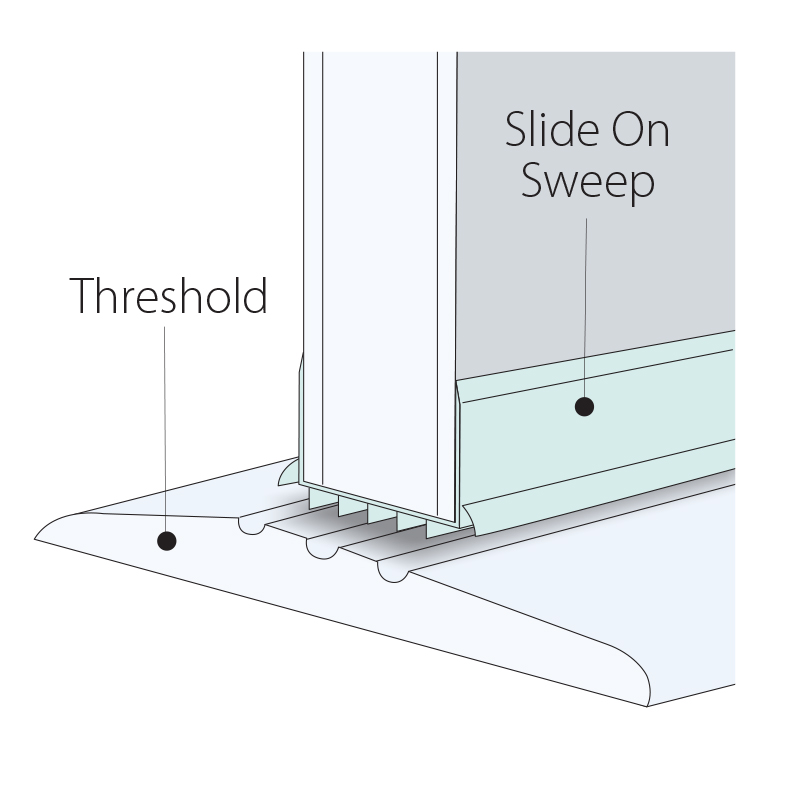
A slide-on sweep, also referred to as a snap-in sweep or door bottom seal, is another type of weatherstripping used for the bottom of exterior doors. It consists of a rigid or semi-rigid strip with a flexible sealing component, often made of vinyl or rubber. Unlike the u-shaped sweep, the slide-on sweep is not attached with screws or nails. Instead, it is designed to be easily installed by sliding the sweep onto the bottom edge of the door. The flexible sealing component of the slide-on sweep creates a tight seal against the threshold when the door is closed, providing protection against drafts, insects, and outside elements.
Pros:
- Easy to install with no tools or complicated adjustments
- Fits many door types and sizes
- Affordable and budget-friendly for better insulation and sealing
Cons:
- May wear out faster and need frequent replacement
- Effectiveness depends on proper fit and alignment
- May not seal as tightly, allowing some drafts, noise, or dust
- Visible attachment may not appeal to everyone
5. Brush sweeps
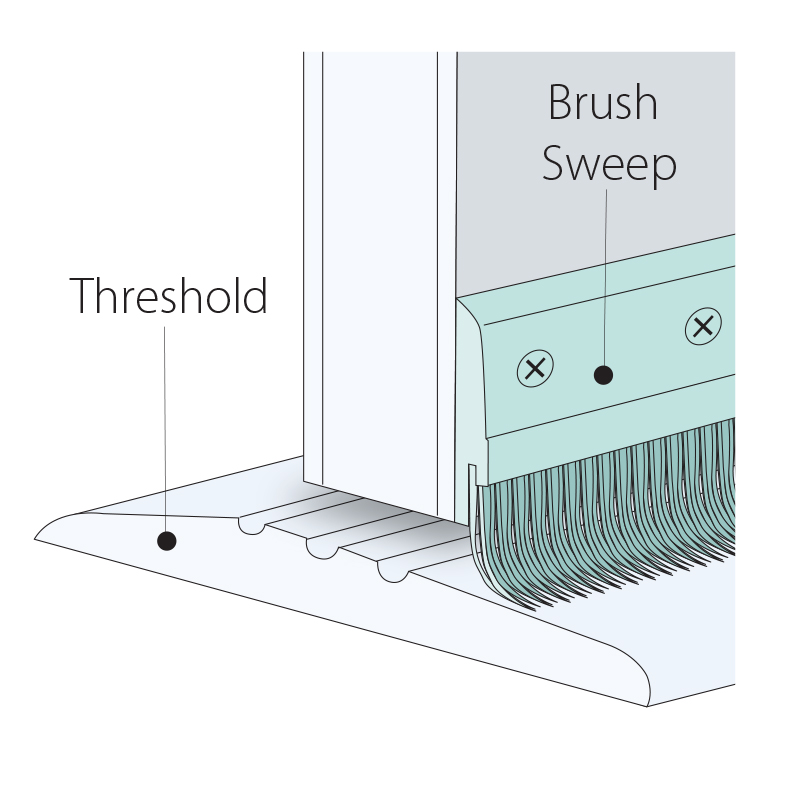
Entrance door brush sweeps are a type of door sweep that utilizes bristle brushes along the bottom of the door to create a seal.
Pros:
- Provide a flexible and effective seal against drafts, insects, dust, and noise
- Can accommodate uneven floors or carpets, providing a good seal in various environments
- Generally simple to install with basic tools and instructions
- Typically durable and can withstand regular use and wear
Cons:
- May not resist weather as well as rubber or vinyl sweeps
- Can collect dust and debris; may need occasional cleaning
- Bristle thickness can affect clearance over carpets or uneven floors
- Visible bristles may not appeal to everyone
6. Triple-fin door sweeps
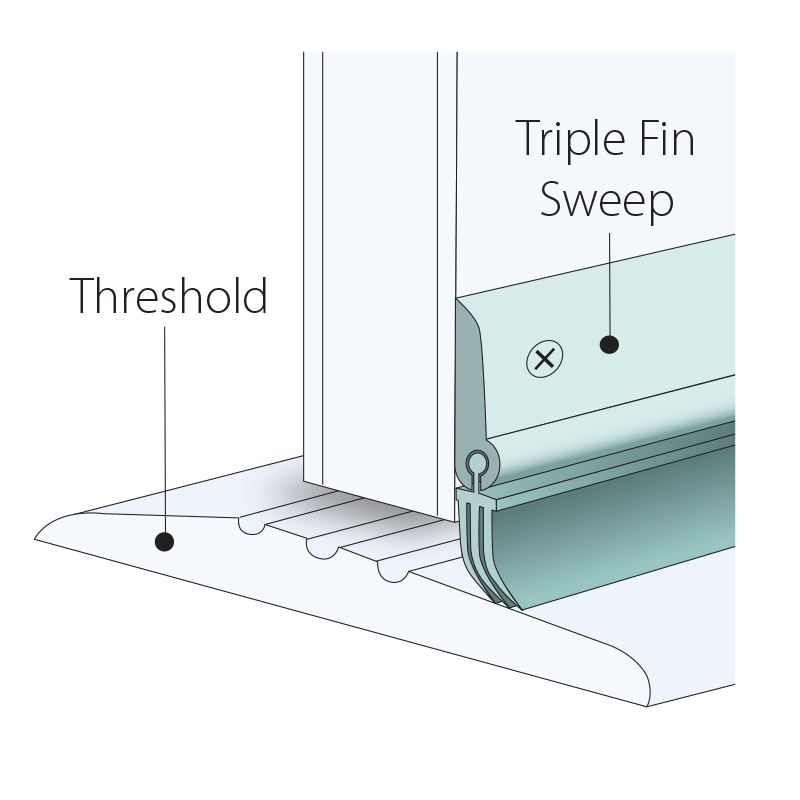
Entrance door triple-fin door sweeps are a type of door sweep that features three flexible fins or blades that create a seal against drafts, insects, dust, and noise.
Pros:
- Seals tightly to block drafts, improving energy efficiency and comfort
- Adjusts for uneven floors or carpets
- Durable for regular use
- Easy to install with basic tools
Cons:
- Three fins may reduce clearance, especially over thick carpets or uneven floors
- Fins can collect dust and debris; may need occasional cleaning
- Visible fins may not appeal to everyone
7. Adjustable door sweeps
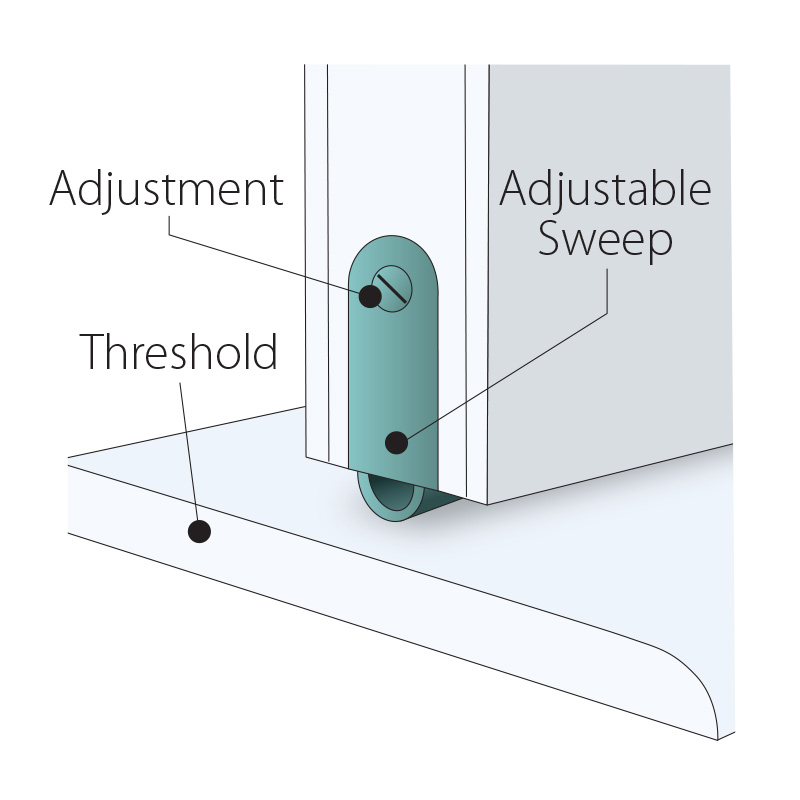
Entrance door adjustable door sweeps are a type of door sweep that can be adjusted to accommodate varying floor heights or uneven surfaces. They typically have a mechanism that allows the length or height of the door sweeps to be modified.
Pros:
- Customizable for different door sizes and uneven floors or carpets
- Seals tightly against drafts, insects, dust, and noise, boosting energy efficiency and comfort
- Easy to install with basic tools
- Durable for regular use
Cons:
- Adjusting height or length may take extra time and effort
- Adjustment mechanism may affect clearance over thick carpets or tight spaces
- Visible mechanism may not appeal to everyone
8. Interlocking door sweeps
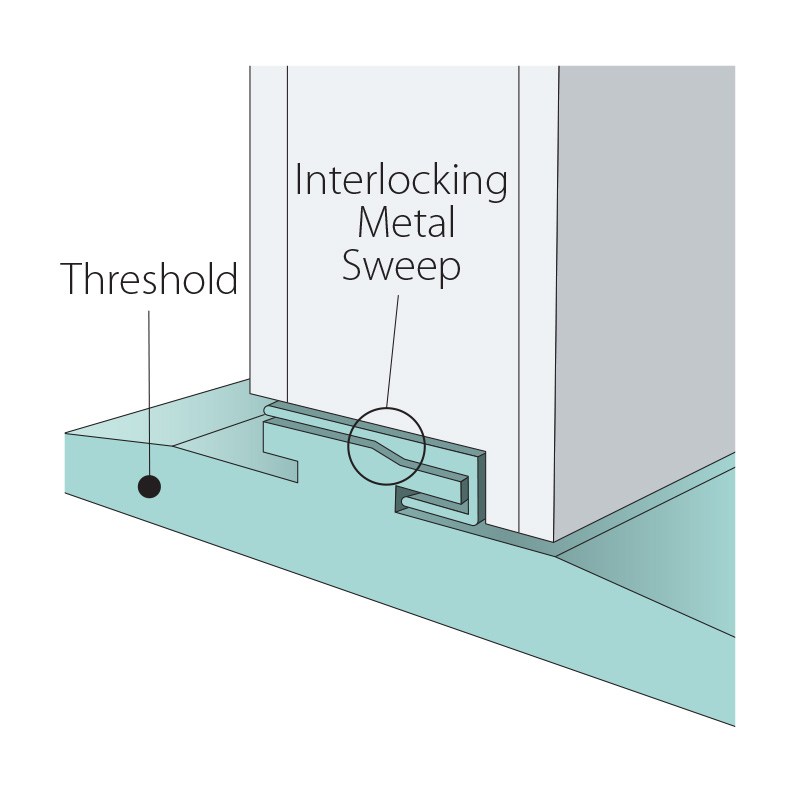
Entrance door interlocking door sweeps are a type of door sweep that features interlocking or overlapping segments that create a seal when the door is closed. They are designed to provide a secure and tight seal against drafts, insects, dust, and noise.
Pros:
- Provides a secure seal to block drafts and boost energy efficiency
- Fits uneven floors or carpets for a tight seal
- Durable for regular use
- Easy to install with basic tools
Cons:
- Limited adjustability for certain floor heights or uneven surfaces
- Interlocking segments may affect clearance over thick carpets or tight spaces
- Visible segments may not appeal to everyone
9. Door shoe sweeps
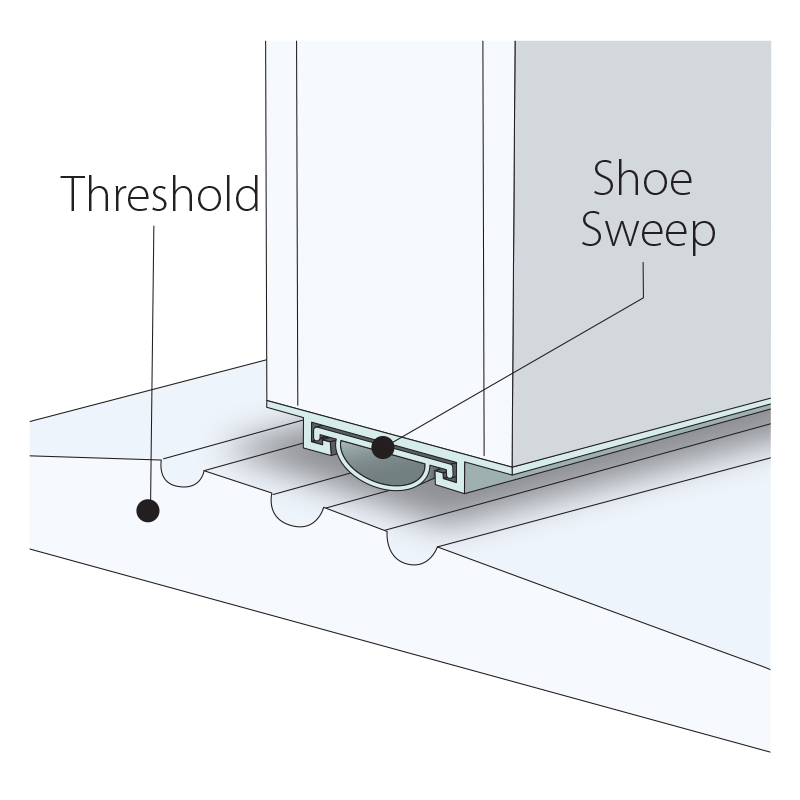
Entrance door shoe sweeps, also known as door shoes or door bottoms, are a type of door sweep that attaches to the bottom of the door and extends beyond the door edge. They are typically made of aluminum or other sturdy materials.
Pros:
- Provides a reliable seal against drafts, insects, dust, and noise
- Made of sturdy materials like aluminum for durability
- Fits uneven floors or carpets for a good seal
- Easy to install with basic tools
Cons:
- Extension beyond the door edge may reduce clearance over thick carpets or tight spaces
- Visible shoe-like extension may not appeal to everyone
- Limited adjustability for certain floor heights or uneven surfaces
10. Acoustic door sweeps
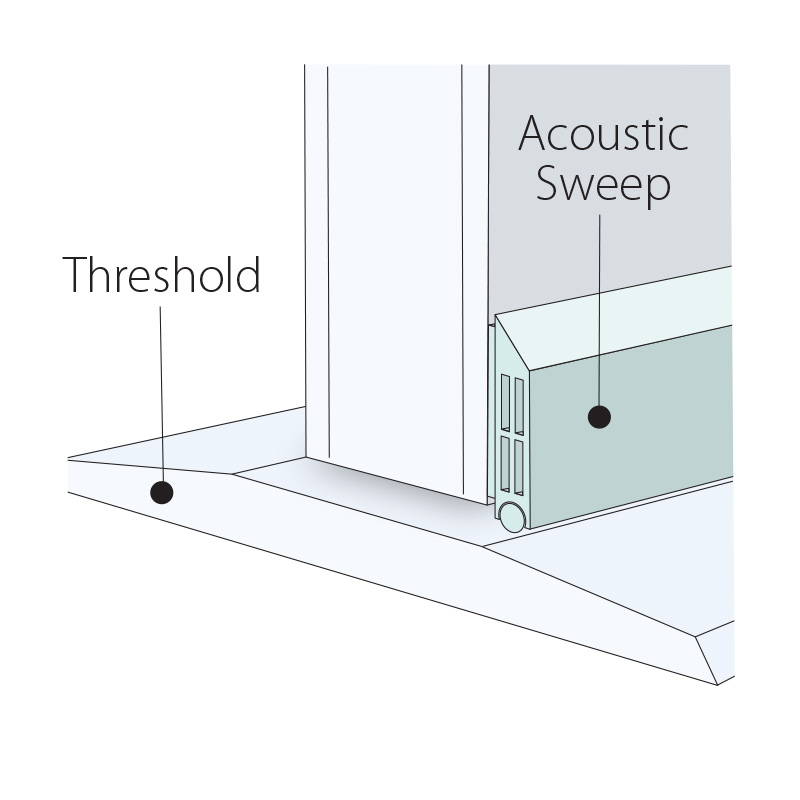
Acoustic door sweeps help reduce sound passing under doors by creating a seal. Their effectiveness depends on the sweep quality and the level of sound you want to block. They work best when combined with other soundproofing methods, like sealing gaps, adding curtains or vinyl, and improving room insulation. Acoustic door sweeps are usually sold as aftermarket add-ons.
Pros:
- Reduces noise for a quieter indoor environment
- Improves privacy by limiting sound transfer
- Seals against drafts and air leaks, boosting energy efficiency
- Easy to install with basic tools
Cons:
- May cost more than standard door sweeps
- Excellent for noise reduction but may seal less effectively against drafts, insects, dust, or moisture
- Visible design may not appeal to everyone
11. Rain drip door sweeps
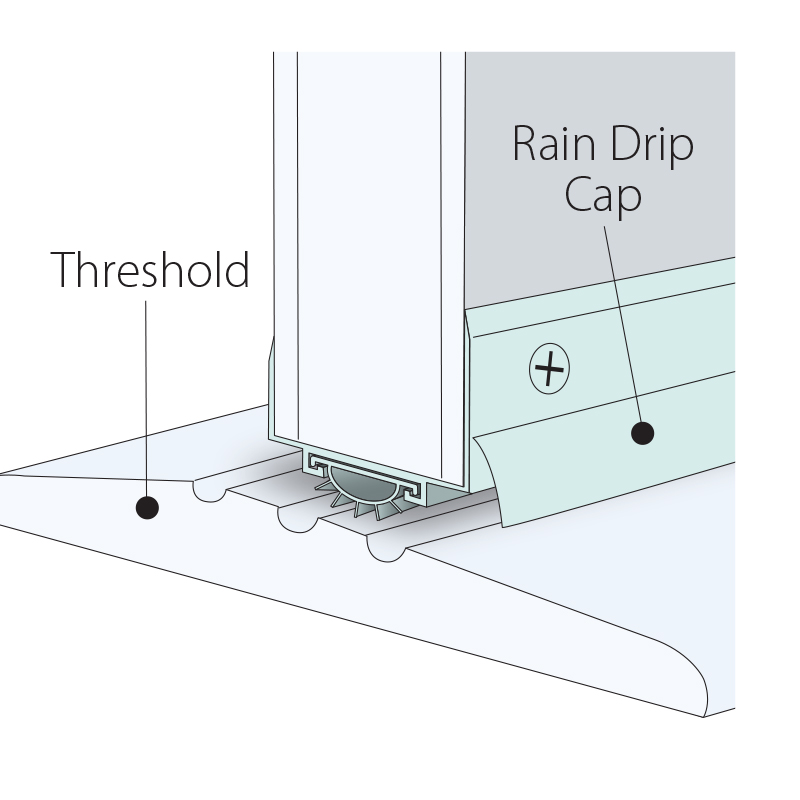
Also known as rain deflectors, rain guards or rain drip caps, are a type of door sweep designed to divert water away from the door and threshold area. They typically feature a sloped or angled design to prevent rainwater from entering. Rain drip caps are often incorporated into various types of sweeps.
Pros:
- Diverts water from the door and threshold, preventing water damage
- Easy to install with basic tools
- Suitable for various weather conditions and both residential and commercial doors
- Durable and weather-resistant
Cons:
- Great for water diversion but may seal less effectively against drafts, insects, dust, or noise
- Visible design may not appeal to everyone
- Focuses on water diversion, with limited energy efficiency or noise reduction benefits
Door Jamb Weatherstripping Types
1. Compression seal weatherstripping
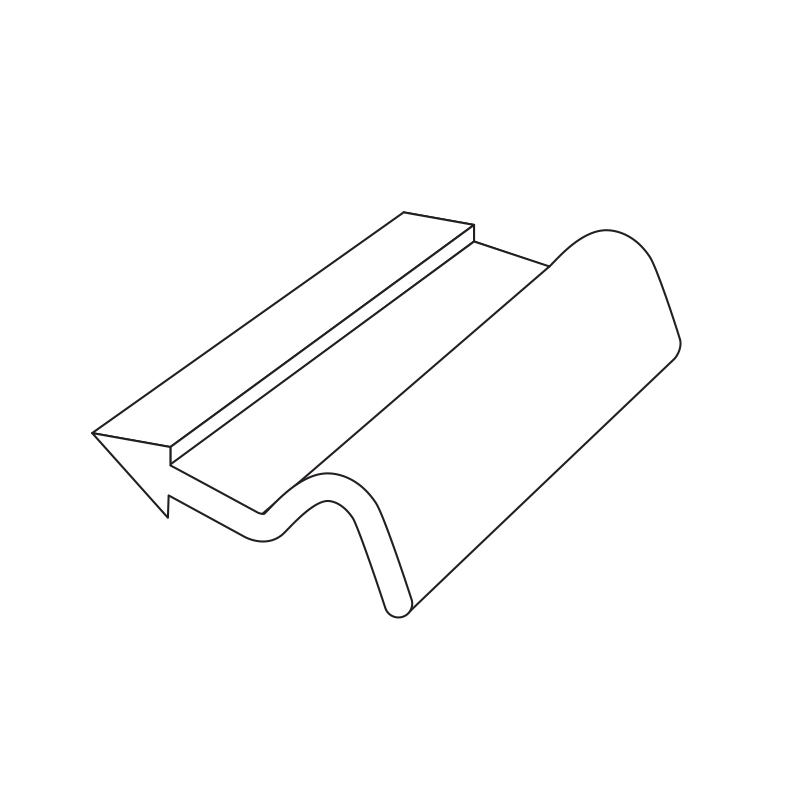
Compression seal weatherstripping is often utilized for exterior doors. It is made of rubber or silicone and creates a tight seal when the door is closed. Compression seal weatherstripping effectively reduces air infiltration and provides insulation.
Pros:
- Creates a tight seal when the door is closed, reducing air infiltration
- Provides good insulation and energy efficiency
- Durable and long-lasting
- Can accommodate various door sizes
Cons:
- Installation may require more effort and precision
- May affect the smooth operation of the door if not properly installed
2. V-strip weatherstripping
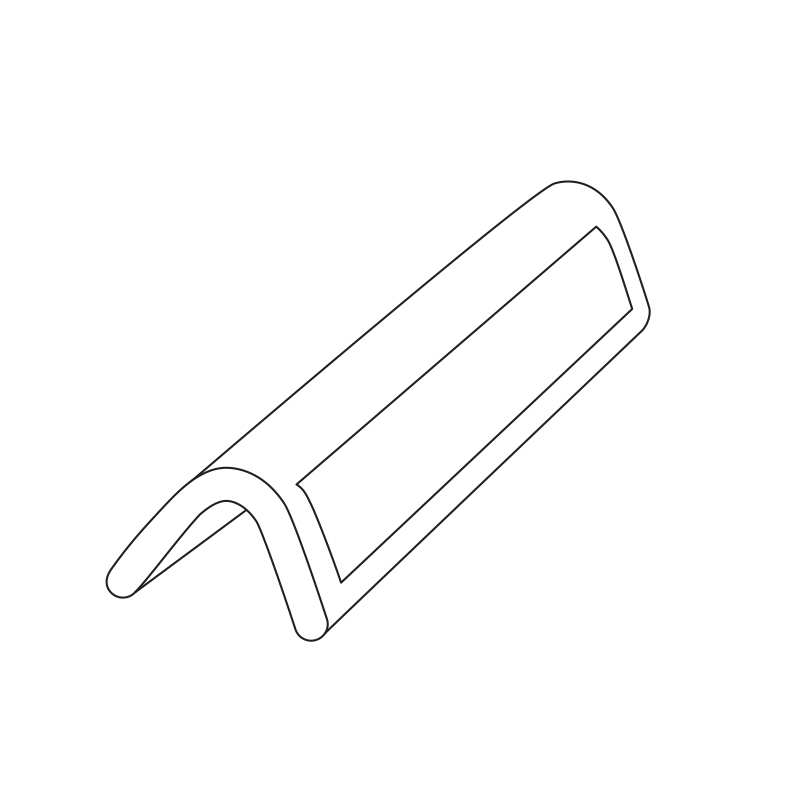
V-strip weatherstripping is often made of durable materials like vinyl or metal and is effective at sealing gaps and preventing drafts in colder climates.
Pros:
- Seals gaps and blocks drafts along the sides and top of doors
- Works on many door types, including hinged and sliding doors
- Easy to install with adhesive or nails
- Durable and long-lasting seal against air and moisture
- Can be painted or stained to match the door
- Available in various materials like vinyl or metal
Cons:
- Needs careful alignment for a proper seal
- May be less effective on larger or irregular gaps
- Adhesive may weaken over time and need reapplication
- Some v-strips may wear out faster
- Not ideal for extreme weather like strong winds or heavy rain
- Requires regular cleaning to prevent dirt buildup
3. Bulb seal weatherstripping
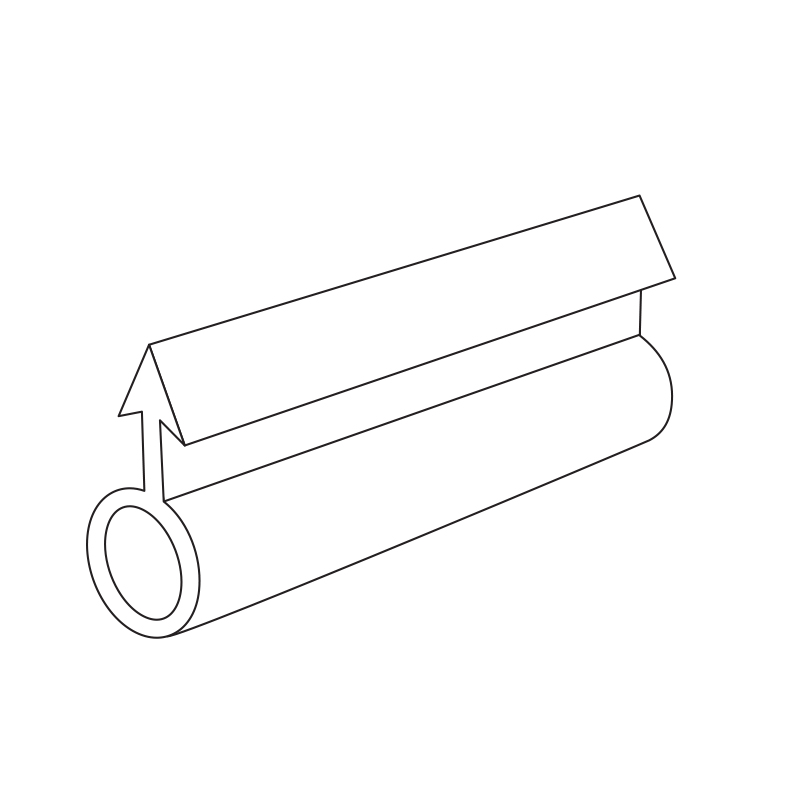
Bulb seal weatherstripping for doors is a flexible and durable sealing material that blocks drafts, air leaks, and moisture, improving energy efficiency and providing protection against the elements.
Pros:
- Seals drafts, air leaks, and moisture in residential doors
- Works on various types of residential doors
- Durable and long-lasting
- Easy to install
- Provides excellent insulation
- Suitable for both interior and exterior doors
Cons:
- Can wear down with heavy or repeated use
- May not fit all door designs or frames
- Can be damaged by extreme temperatures or UV exposure
- Needs regular maintenance for an effective seal
- Replacement may be difficult if the profile is discontinued
4. Magnetic weatherstripping
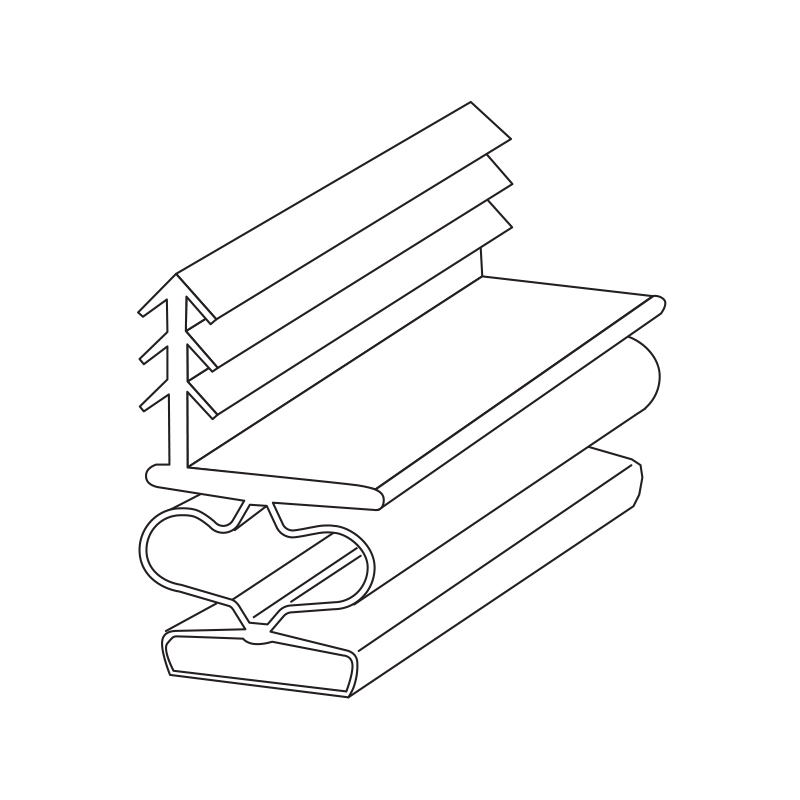
Magnetic weatherstripping is primarily used on metal doors. Magnetic weatherstripping consists of a magnetic strip attached to one surface and a metal strip attached to the opposing surface. When the door is closed, the magnetic strip creates a strong seal against the metal strip, providing a tight barrier against drafts, air infiltration, and moisture.
Pros:
- Creates a strong, secure seal when magnets align
- Provides good insulation and blocks drafts
- Easy to install and remove
Cons:
- May cost more than other weatherstripping options
- Needs proper magnet alignment for an effective seal
- Not ideal for larger gaps or irregularly shaped windows
5. Interlocking metal weatherstripping
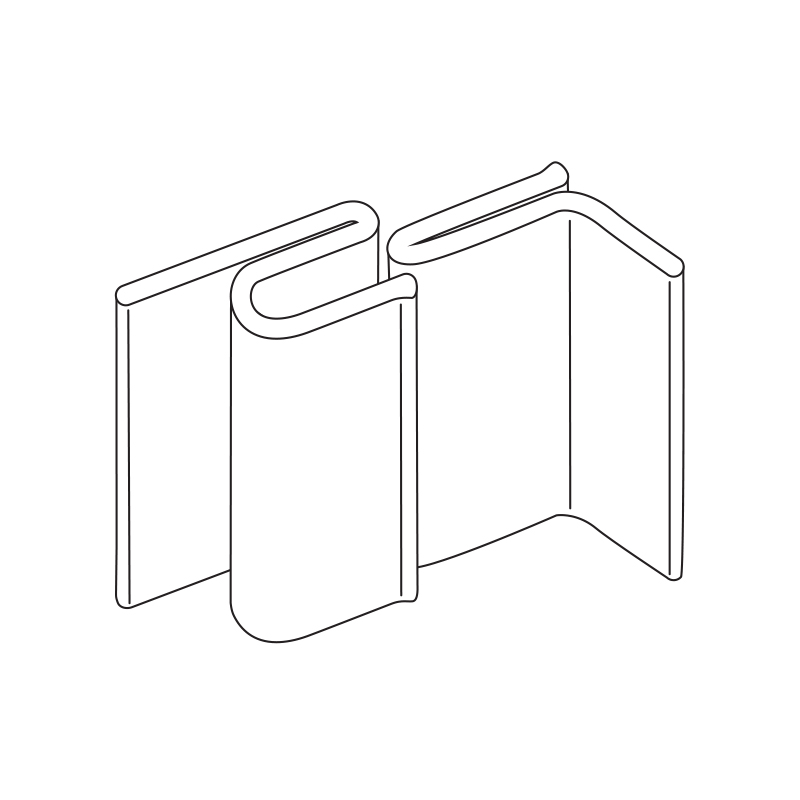
Designed to provide a durable and effective barrier against air, water, and noise infiltration. It consists of metal strips with interlocking profiles that fit together when the door is closed, creating a nice, tight seal.
Pros:
- Durable and weather-resistant
- Seals tightly against air and water
- Fits wider gaps and uneven surfaces
- Long-lasting and low-maintenance
- Enhances security by making windows and doors harder to force open
Cons:
- Usually more expensive than other weatherstripping options
- Installation may need extra effort and precision
- Regular maintenance needed to keep metal weatherstripping in good condition
6. Brush-type weatherstripping
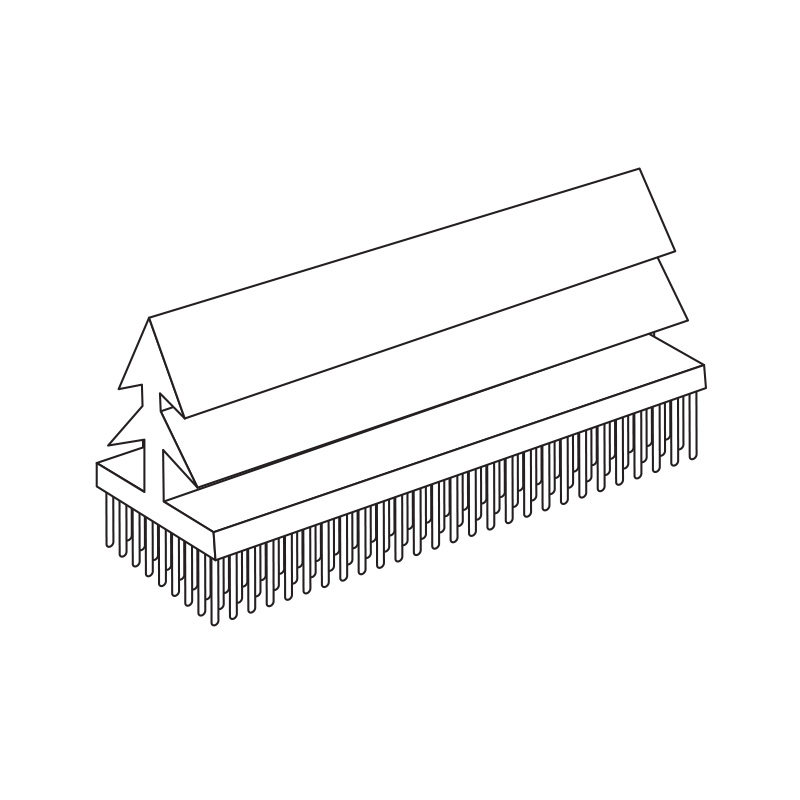
Brush-type weatherstripping, also known as bristle or brush weatherstripping, is a type of weatherproofing material used to seal gaps and provide insulation around doors
Pros:
- Blocks drafts, air leaks, and moisture
- Works on doors, windows, sliding doors, and cabinets
- Allows quiet and smooth operation
- Durable and resistant to wear
- Easy to install with adhesive, screws, or self-adhesive backing
- Adapts to uneven surfaces and gaps for a tight seal
Cons:
- Best for small to moderate gaps
- Needs regular inspection and maintenance
- Less effective in strong winds, heavy rain, or extreme cold
- Offers some noise reduction but not as much as specialised materials
- Requires regular cleaning to prevent dirt buildup
7. Pile weatherstripping
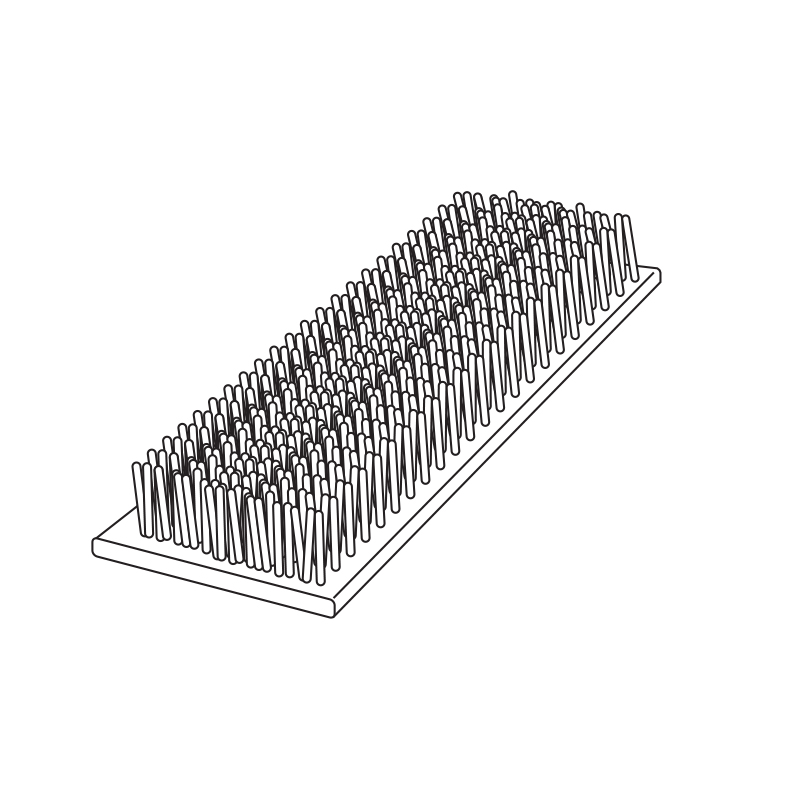
Pile weatherstripping, with its dense and flexible fibres, offers excellent insulation against cold air infiltration and helps maintain a warm interior environment.
Pros:
- Seals effectively against air and moisture
- Works on various types of doors
- Durable and long-lasting
- Allows smooth operation without friction
- Visually appealing with different colour and height options
Cons:
- Can be damaged by dirt and debris
- May need periodic replacement
- Less effective on large gaps
- Installation can be tricky
- Provides limited sound protection
Choosing the Right Weatherstripping
When choosing weatherstripping, consider your climate, door type, and how the door will be used. In cold climates, tight compression or magnetic seals work best, while humid or wet environments benefit from durable silicone or vinyl options.
Tip: For high-traffic entrances, replaceable sweeps or adjustable seals offer convenience and longevity. Keep in mind that pre-installed weatherstripping on new doors is designed for optimal fit and efficiency.
Maintenance & Longevity
Even the best weatherstripping needs a little attention to stay effective. Take time each year to check for drafts or gaps, replace any worn or damaged sweeps and seals, and give brush-type sweeps a quick cleaning to keep them working properly.
How Weatherstripping Improves Energy Efficiency
Properly installed weatherstripping reduces heat loss, prevents drafts, and lowers energy costs. Paired with energy-efficient doors, it helps maintain indoor comfort year-round.
Related articles
Summary
Weatherstripping is essential for the performance of a new door. Properly installed seals help prevent drafts, moisture, dust, and noise from entering your home, ensuring comfort and energy efficiency. With a variety of materials and styles available, it’s important to choose the right type for your climate and usage. Regular inspection and maintenance will also extend the life of both your door and its weatherstripping, keeping it effective for years to come.
Considerations
Window into a Door
